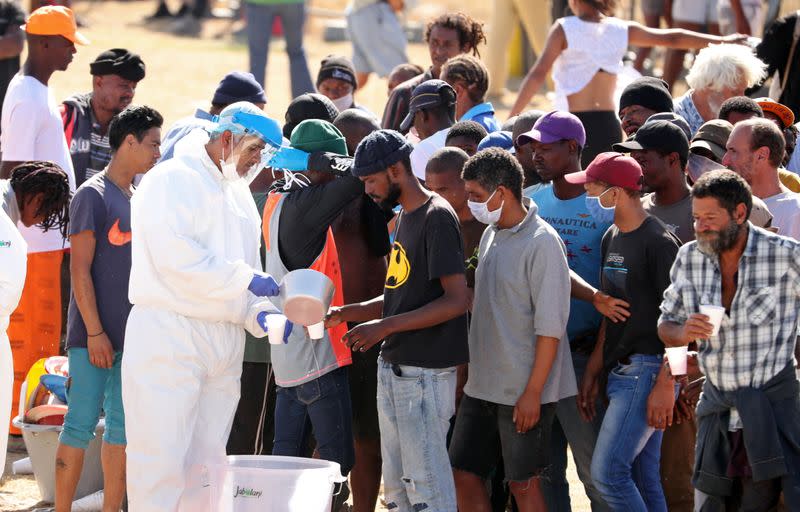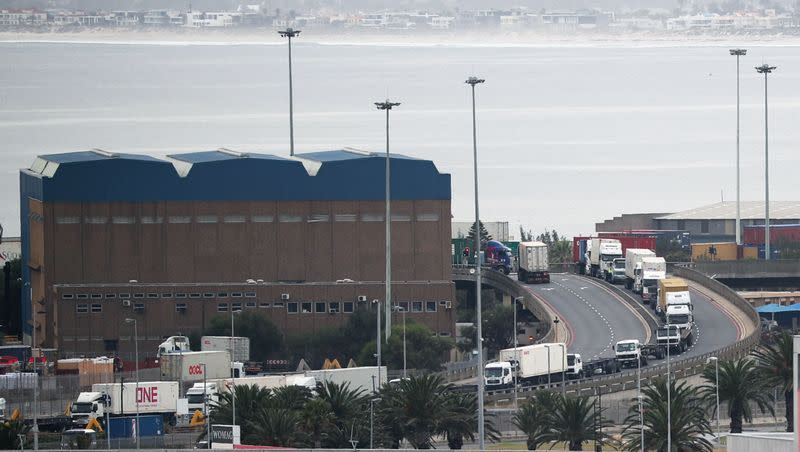The cost of lockdowns in emerging markets
By Karin Strohecker
LONDON (Reuters) - Measures to prevent the spread of coronavirus in developing countries come at a heavy cost to governments and citizens, raising poverty levels and government debt and crimping future growth.
Policy-makers have to make some hard socio-economic choices depending on the demographic, fiscal and labour market set-up of their country. Rising inflation pressures and borrowing costs might well force countries to ease restrictions before the virus spread has been contained.
Below are three factors that will play a role in decision making on the scope and length of lockdowns.
LABOUR
The percentage of the workforce in informal labour is a big factor in decision making, say analysts, as those workers will be hardest hit and will need income support.
Data from the International Labour Office shows at least 20% of workers across nearly all emerging markets are in informal labour. In Sub-Saharan Africa, this rises to more than 90%.
Among the measures that have been taken, Slovenia has introduced a temporary basic income, India has launched direct cash benefit transfers and Brazil's government is doing similar.
"It is a really hard trade-off," said Monica de Bolle at the Peterson Institute for International Economics, who advises Brazil's government.
De Bolle calculates that support programmes in Brazil and Mexico providing the vulnerable with half the minimum wage for one year would add up to some 7 percentage points of GDP.
"In many countries a very large share of the population... are in informal labour markets - even if you provide relatively low stipends, you are still talking about 5-10 percentage points of GDP - that is huge when everything is already stretched thin."
Graphic - Informal employment: https://fingfx.thomsonreuters.com/gfx/mkt/gjnvwmkyvwr/informal%20employment.JPG
MORTALITY
The number of extra deaths from COVID-19 compared to a country's overall death rate varies hugely.
Calculating on the basis that 20% of the population will get infected of which 6.6% will lose their lives, the total numbers add up to a different proportion of total annual deaths in each country, said Charles Robertson at Renaissance Capital.
"The human cost is very different, and the total human cost as a proportion of the population should be very much less in young African countries than in older European countries, and that then is going to impact on government thinking about the right economic policy response," said Robertson.
Some countries with low numbers of extra deaths measured in additional weeks of annual deaths have been quick to come out of lockdown. Ghana's President Nana Akufo-Addo lifted restrictions after just three weeks in its two main cities, citing a push to "protect the economy".
Graphic - Coronavirus deaths: https://fingfx.thomsonreuters.com/gfx/mkt/qzjvqrldpxm/Extra%20deaths%20from%20coronavirus.JPG
CONSUMPTION
Lockdowns are choking private consumption, which plays a key role in many emerging market economies and, in some, are a main driver of growth.
Private consumption accounted for more than 80% of GDP in 2019 in Egypt, around 77% in Kenya and Ghana and more than 60% in South Africa.
"Consumer spending will be the channel where we will see the most immediate and visible fallout," said Jacques Nel, head of Africa macro at NKC Research.
"Rising consumer spending has been a big driver behind growth in many countries, especially in West and East Africa, but we also have to keep in mind that consumer spending plays a big role in the larger economies overall," he added.
Graphic - Private Consumption: https://fingfx.thomsonreuters.com/gfx/mkt/yxmvjzlevrz/Private%20consumption.JPG
(Reporting by Karin Strohecker;Editing by Elaine Hardcastle)

 Yahoo Finance
Yahoo Finance 

